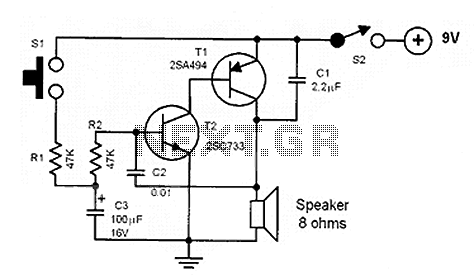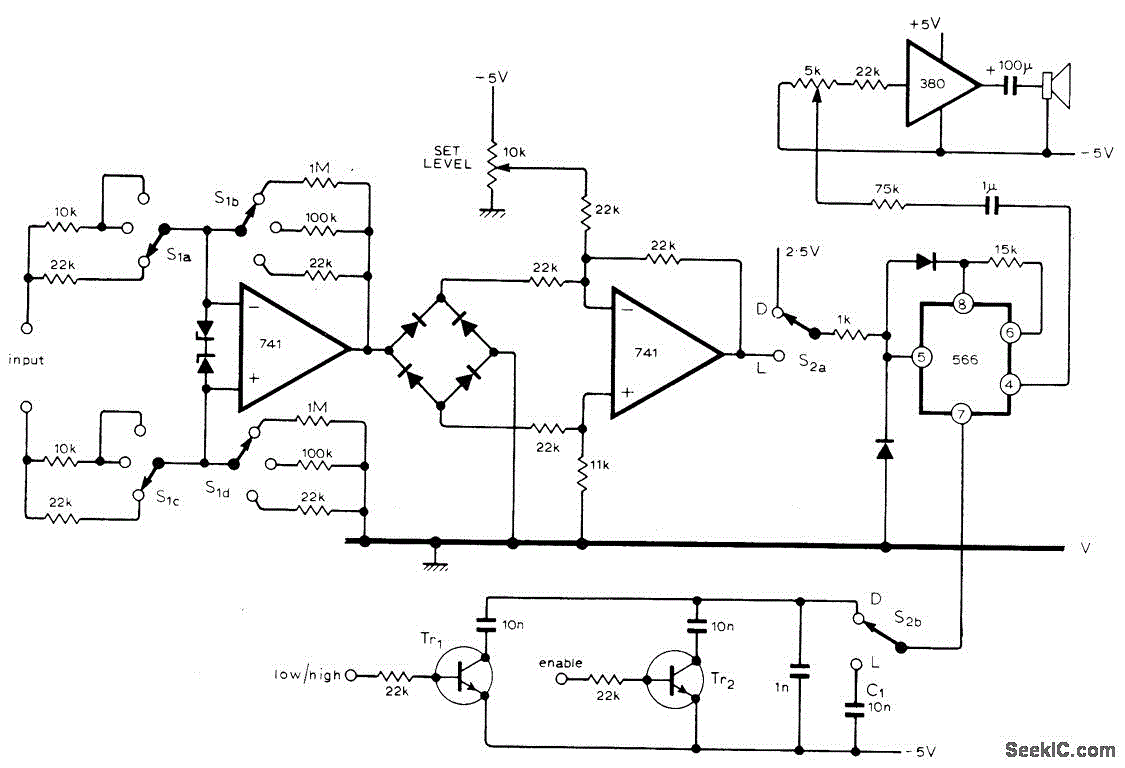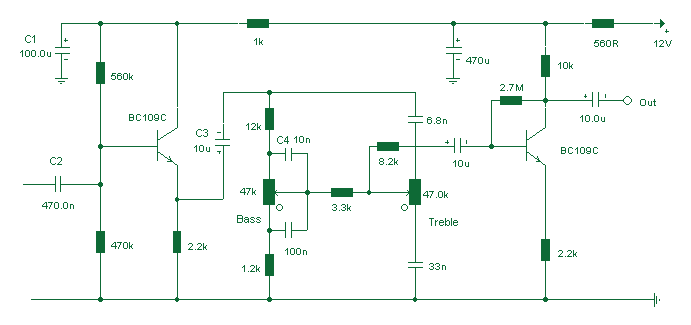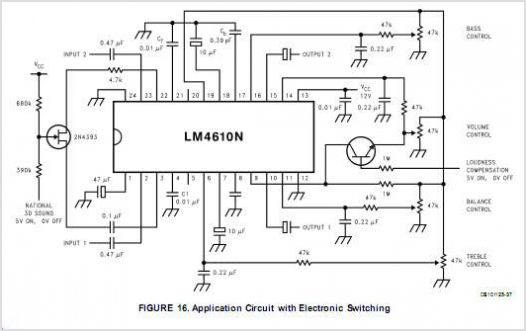
Telephone handset tone dial encoder
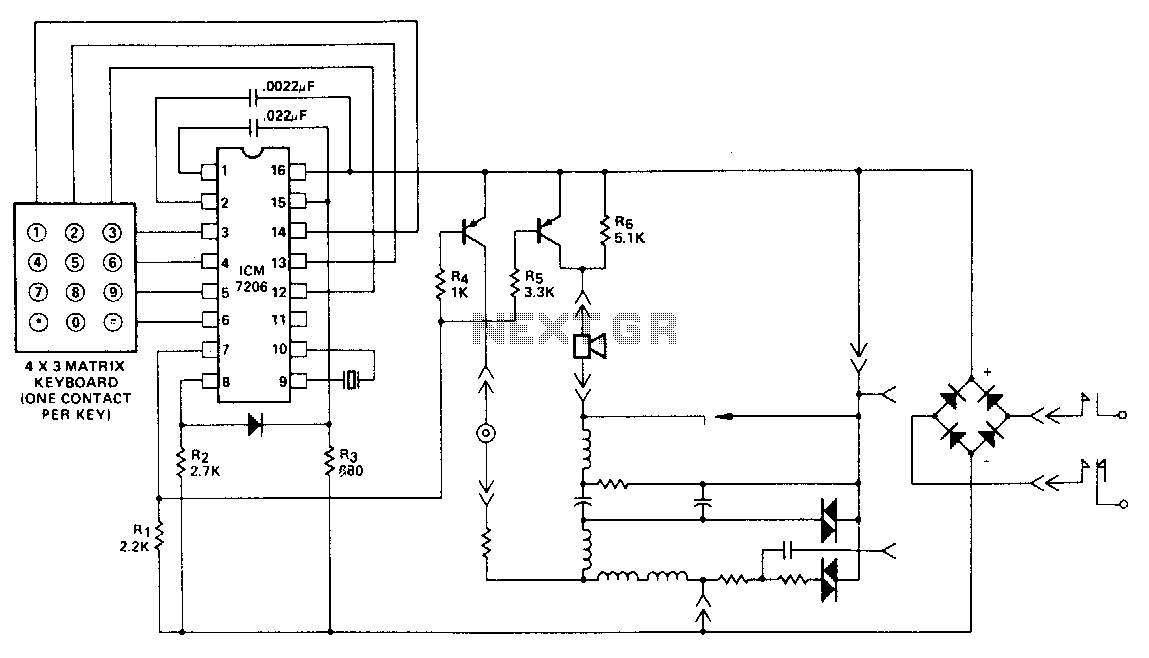
This encoder utilizes a single contact per key keyboard and implements all other switching functions electronically. A diode is positioned between terminals 8 and 15 to prevent the output from exceeding 1 volt negative in relation to the negative supply voltage (V-). The circuit functions across a supply voltage range of 3 volts to 15 volts.
The described encoder circuit is designed to efficiently manage key inputs from a keyboard with a single contact per key. This configuration simplifies the physical design of the keyboard while enabling electronic processing of the key presses. The electronic switching functions are managed through integrated circuitry, which enhances the overall reliability and performance of the encoder.
The diode connected between terminals 8 and 15 serves a critical role in the protection of the circuit. By preventing the output voltage from dropping more than 1 volt below the negative supply voltage (V-), the diode ensures that the circuit operates within safe voltage levels, thereby safeguarding sensitive components from potential damage due to reverse voltage conditions.
The operational voltage range of 3 volts to 15 volts makes this encoder versatile and suitable for various applications. It can be used in low-power devices as well as in systems that require higher voltage levels. This flexibility allows integration into a wide range of electronic projects, from simple consumer electronics to more complex industrial applications.
In summary, this encoder circuit is characterized by its efficient use of a single contact per key, electronic switching capabilities, protective diode functionality, and a broad operational voltage range, making it a robust solution for keyboard interfacing in electronic designs.This encoder uses a single contact per key keyboard and provides all other switching function electronically. The diode between terminals 8 and 15 prevents the output going more than 1 volt negative with respect to the negative supply V-
The circuit operates over the supply voltage range from 3 volts to 15 volts.
The described encoder circuit is designed to efficiently manage key inputs from a keyboard with a single contact per key. This configuration simplifies the physical design of the keyboard while enabling electronic processing of the key presses. The electronic switching functions are managed through integrated circuitry, which enhances the overall reliability and performance of the encoder.
The diode connected between terminals 8 and 15 serves a critical role in the protection of the circuit. By preventing the output voltage from dropping more than 1 volt below the negative supply voltage (V-), the diode ensures that the circuit operates within safe voltage levels, thereby safeguarding sensitive components from potential damage due to reverse voltage conditions.
The operational voltage range of 3 volts to 15 volts makes this encoder versatile and suitable for various applications. It can be used in low-power devices as well as in systems that require higher voltage levels. This flexibility allows integration into a wide range of electronic projects, from simple consumer electronics to more complex industrial applications.
In summary, this encoder circuit is characterized by its efficient use of a single contact per key, electronic switching capabilities, protective diode functionality, and a broad operational voltage range, making it a robust solution for keyboard interfacing in electronic designs.This encoder uses a single contact per key keyboard and provides all other switching function electronically. The diode between terminals 8 and 15 prevents the output going more than 1 volt negative with respect to the negative supply V-
The circuit operates over the supply voltage range from 3 volts to 15 volts.
